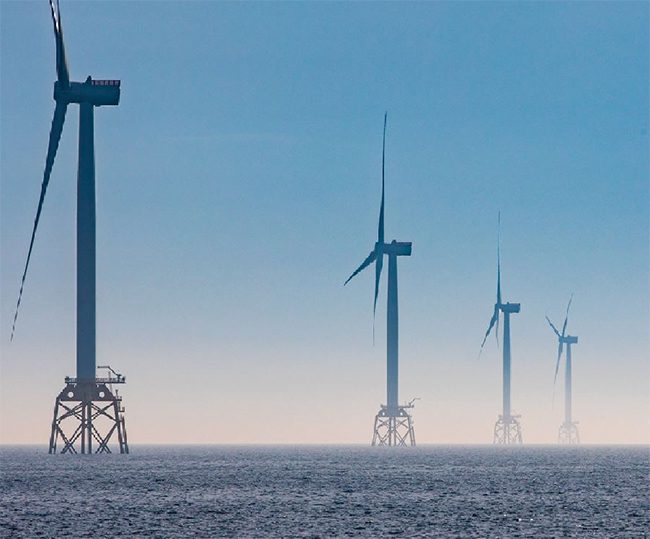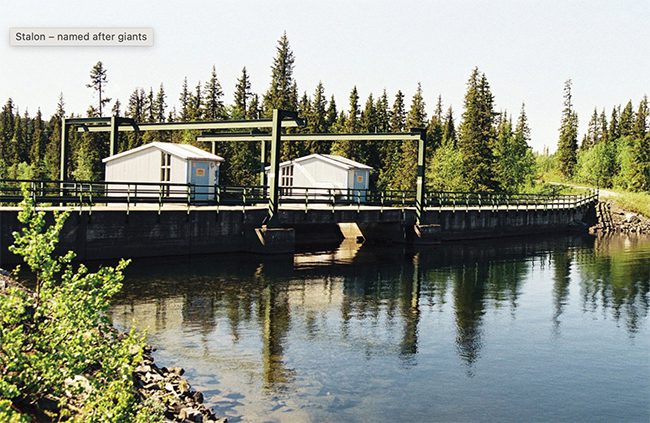Ester Transformer Fluids Bring Innovation to Clean Energy Systems
Clean, green, renewable energy deployments continue to grow each year. A recent statement from the International Renewable Energy Agency (IRENA) noted, “By the end of 2022, global renewable generation capacity amounted to 3,372 gigawatts (GW), growing the stock of renewable power by a record 295 GW or by 9.6%. An impressive 83% of all power capacity added last year was produced by renewables.”
Green energy production sources are reducing dependence on fossil fuels and improving sustainability levels worldwide, and transformers are a critical part of these systems’ electricity delivery process. But something interesting is happening—with sustainability as a concept, and even as a business imperative, growing in influence across all industries, the transformers used in renewable energy assets (whether in a wind turbine nacelle, solar farm, a subsea installation, or in a hydropower station) are increasingly protected not by mineral oil insulating fluid (the usual material used in fluid-filled transformers), but by ester transformer fluids—indicating a possible sea change in how energy infrastructure is evolving.
First, it’s important to understand what transformer fluids are and what job they perform. The primary function of this medium is to transfer the by-product heat generated by the transformer’s core and windings to the cooling system. This helps to control the safe operating temperature of the transformer and helps to ensure a longer service life.
Traditionally, electric utilities and transformer original equipment manufacturers have specified mineral oil for this purpose. However, with the growth in the types of applications transformers support (such as distributed and renewable energy), and the corresponding rise in the demand for more sustainable solutions in infrastructure, the inherent weakness of mineral oil becomes all too apparent—primarily, mineral oil is potentially flammable (igniting at around 170C or 338F).
When a transformer suffers a massive malfunction and ruptures, the mineral oil will empty out and create a dangerous pool fire, and the potential for catastrophic damage to life, land, and property cannot be ignored. In addition, mineral oil is non-biodegradable and toxic, presenting a serious hazard to aquatic life and surrounding ecosystems if spilled.
Mineral oil cleanup processes are expensive, lengthy, and spell disaster for the offending company’s public image. Lastly, mineral oil is not moisture-tolerant, and it becomes saturated with water at about 60 parts per million (ppm) at ambient temperature. As a result, the insulating paper (which is most commonly damaged by water/moisture ingress and from water given off during the natural breakdown of the paper insulation), and thus the transformer, will experience a shorter service life when compared to more advanced fluids. In order to address these shortcomings, safer alternatives such as ester-based fluids are increasingly being specified.
Categories of Ester Transformer Fluids
Ester transformer fluids fall into two main categories: synthetic and natural. Synthetic esters were first developed in the 1970s to replace polychlorinated biphenyls, or PCBs, in existing distribution transformers. Natural ester transformer liquids are derived from renewable and natural sources, such as soybean or rapeseed oil, and were introduced in the 1990s.
The main difference in the two is in their oxidation stability. Synthetic esters are extremely stable and suitable for breathing transformers and sealed units. However, natural esters are less oxidation-stable and are only recommended for sealed systems. All synthetic and natural ester transformer fluids are biodegradable and non-toxic, making them a more sustainable option for green energy systems, aligning with the goal of reducing the environmental impact of energy production.
Originally, the main reason for using an ester transformer fluid was to improve fire protection and this continues to be a compelling driver for users. With an ester fluid, manufacturers and end-users can reduce risk and save costs by using a fluid with a high fire point (greater than 300C compared to mineral oil’s fire point of 170C). Such fire safety benefits can lead to a reduction in the requirements for additional fire protection, which is a critical consideration in green energy installations where space is often constrained—for example, in offshore wind energy substations.
In addition, the high fire point of ester fluids means transformers can be run at higher temperatures, increasing the amount of power distributed without the need to expand the size and weight of the unit. This also permits original equipment manufacturers to develop smaller ester-based transformers that produce the same power output as larger mineral oil alternatives, further saving space.
A good example of the use of ester transformer fluids in the green energy world is in wind turbines. Ester transformer fluids are ideal for this application because they can withstand the high temperatures and stresses that are generated in the turbine’s transformer while also performing well in cold weather. For offshore turbines, or those found in remote locations, a synthetic ester is often the preferred choice, providing a robust solution that won’t degrade even if the transformer seal is compromised. When designing and specifying transformers for wind turbines, an increase in onerous power demands is leading to the use of liquid-filled units, rather than the cast-resin designs that were used in the past. The selection of the correct liquid for a transformer is key to ensuring that a turbine is safe, reliable, and imposes minimal risk or impact on the environment should fluid leakage ever occur.
Another important use of ester transformer fluids is in solar photovoltaic (PV) systems. PV power systems convert the energy of the sun into electrical energy using photovoltaic cells. Transformer fluids are used in the transformer paired to the PV inverter, which converts the direct current (DC) produced by the cells into alternating current (AC) that can be used to power homes and businesses. Ester transformer fluids are increasingly being used in these units because they offer proven fire safety characteristics and are biodegradable. And, increasingly, owners of mineral oil–filled PV transformers are finding that many Insulated Gate Bipolar Transistor (IGBT) inverters are sending difficult high-frequency harmonics to the transformer, inducing stress accumulations in the transformers, and creating concerns for dangerous hydrogen gassing.
Examples in Renewable Energy Installations
The following three snapshots are examples of ester transformer fluids being used in today’s demanding green energy world.
 |
|
1. The Beatrice wind farm off the coast of Scotland features substations that use synthetic ester-filled transformers, considered more friendly to the environment and less of a fire risk. Courtesy: SSE Renewables |
Ester Fluid in Offshore Wind Substations. Substations provide the vital link between wind turbines and the electrical grid. As wind farms move farther offshore, substations are positioned on purpose-built platforms, bringing challenges that include transformer fire safety and maintenance costs. In 2017 and 2018, Siemens delivered two newly developed offshore wind substations for the 588-MW Beatrice wind farm (Figure 1) in Scotland. They featured synthetic ester-filled transformers and a shunt reactor that supported a revolutionary new design that was more environmentally friendly and fire-safe compared to mineral oil, and 30% to 40% lower cost with much lower risks.
Offshore transformer risks include fires that are difficult to combat and could result in the wind farm being shut down. Filling a system with synthetic ester fluid instead of mineral oil increases fire safety because the ester has a much higher fire point (greater than 300C) and a 100% fire safety record. Furthermore, the specification of synthetic ester fluid has enabled the innovative design of significantly smaller offshore substations, removing the need for complicated (and expensive) transformer fire suppression as well as extra containment systems for the fire suppression liquid collection. A smaller substation also requires a smaller crane to do the lift on to the bottom set of piles, saving money and time spent waiting for the handful of super large and expensive offshore cranes.
In offshore substations, a transformer’s performance is just as important as its fire safety. If the transformer fails to withstand the challenging environment, it will need to undergo expensive unplanned maintenance. Thus, specifying a synthetic ester fluid that is extremely robust, oxygen stable, and proven to work means greater assurance for operators.
Ester Fluid in Floating Solar Farms. National Thermal Power Corporation, or NTPC, India’s largest energy conglomerate, recently unveiled a 75-MW floating solar PV installation in Kayamkulam, Kerala, using 16 free-breathing transformers. Floating solar is a relatively new development in the renewable energy world. The immediate advantages are clear—floating solar uses less costly real estate, allowing the surrounding land to be used for agriculture. It also can reduce evaporation, which for most reservoirs is beneficial. In addition, the water can provide a cooling effect around the panels that improves PV panel performance.
However, exposing components such as transformers to water and humid environments increases the risk of corrosion and rust, leading to the transformer insulating fluid being potentially exposed to air. Synthetic ester fluid was used in NTPC’s solar farm transformers because of its proven performance in free-breathing transformers (with its high oxidation stability) and environmental risk reductions (biodegradable status and non-toxicity to aquatic life if any leaks were to occur).
 |
|
2. The Stalon hydropower station in Sweden, with much of its operation underground, uses synthetic ester fluid in its new transformer. The fluid is used for purposes of fire safety, along with its non-toxicity to fish and its biodegradability. Courtesy: Vattenfall |
Ester Fluid in a Hydroelectric Power Plant. Swedish utility Vattenfall identified the need for a new transformer for the Stalon underground hydropower station in northern Sweden (Figure 2). It was decided that a mineral oil transformer would not be appropriate in this instance. First, the 238-kV transformer was to be placed underground, making fire safety a critical requirement. Second, though just as important, the power station was located in an environmentally sensitive area, where spillage of mineral oil could cause serious and long-lasting damage in addition to risking highly expensive cleanup operations. A synthetic ester fluid was deployed as the cooling fluid because of its fire safety, non-toxicity to fish, and biodegradability, further endorsing the credentials of ester fluids in renewable energy.
Ester transformer fluids have become an important component of clean, renewable, and green energy systems. Their superior fire resistance, biodegradability, and high dielectric strength make them a safer and more sustainable option than typical transformer fluids. They also allow design engineers to create innovative and cost-saving approaches to substations and the entire system where transformers are used. Ester transformer fluids are now used in mainstream applications by utilities, heavy industry, and transformer manufacturers worldwide, and are proven in transformers from distribution units to power units of more than 400 kV.
—Anthony Coker is executive vice president for M&I Materials Inc.